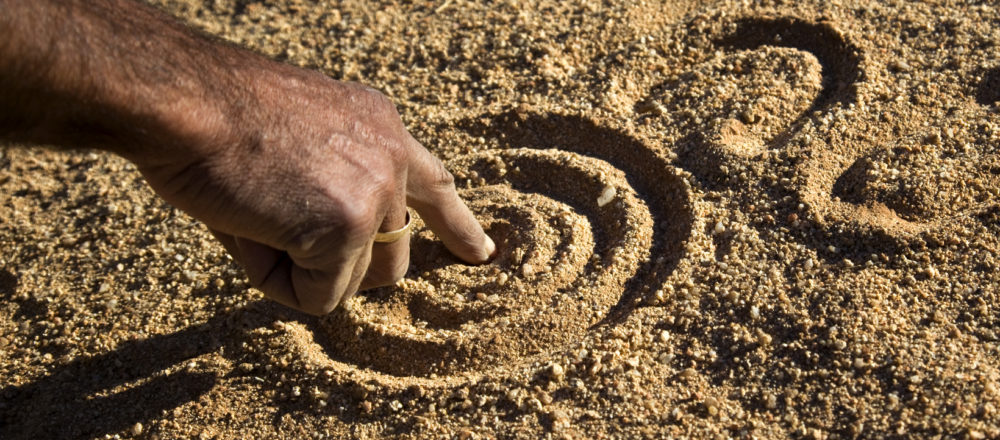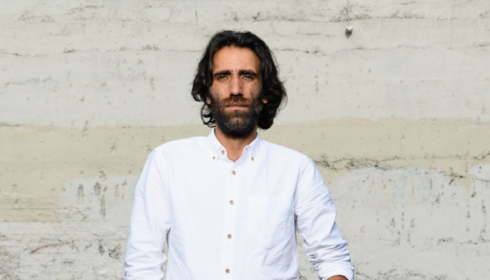In June, the Victorian Water Minister, Peter Walsh introduced a Bill to establish a new Water Act for the State. This proposed new legislation represents a once-in-a-generation opportunity to improve the management of Victoria’s rivers and water resources. The Victorian Coalition Government says it wants to “streamline” the daunting range of legislative instruments and agencies that determine water management in the State as well as “safeguard” existing rights to water. While the proposed Act may be more straightforward, and about 200 pages shorter, than the previous Water Act 1989, the Victorian Government has failed to bring diverse stakeholders together to ensure equitable and sustainable management of our most precious natural resource. Public debates about water are often framed as a contest between the rights of irrigators and the conservation of the environment and this new draft legislation has all-but ignored the rights of Victoria’s First Peoples.
Fresh water is vital to the continuity of Indigenous cultures in Australia, the driest inhabited continent on Earth. Victoria’s rivers, floodplains, lakes and streams have provided vital economic and spiritual nourishment to diverse Aboriginal nations for at least 30,000 years. Almost 30 per cent of known Aboriginal cultural heritage places in Victoria exist within 100 metres of a waterway. Traditionally, many Aboriginal people lived alongside waterways and harnessed water resources to develop permanent settlements and sophisticated social and economic systems, such as the elaborate eel farms established by the Gunditjmara people at Lake Condah in Western Victoria.
Today, river-dependent ecosystems provide important food resources, medicinal plants and materials vital for ongoing cultural practices. Waterways connect communities to sacred sites and traditional knowledge. They also sustain totem species, such as the Long-Necked Turtle and Platypus. These are the living, breathing heart of Aboriginal culture. Over-extraction of water for consumptive use and the degradation of river habitats mean that many water-dependent values are in danger. Many Indigenous communities see their river country in a sad state of decline. As waterways suffer, this environmental degradation erodes the rich heritage of some of the oldest surviving cultures on Earth.
Water resources are worth big bucks. The estimated gross value of the Victorian water market in 2011–12 was $519 million. Aboriginal people have not benefited fairly from the extraction and commercialisation of this resource. Appropriation of land and water resources, discrimination and the forced removal of Indigenous people off country have resulted in serious, ongoing disadvantage. In the Murray Darling Basin, which includes large swathes of Northern Victoria, Indigenous people own less than 1 per cent of water, despite comprising nearly 4 per cent of the population. Indigenous people want to build enterprises and employment in their communities, but in many cases, they cannot compete with irrigators and agri-businesses to acquire water on the open market. With a growth rate of 5.8 per cent per annum, Indigenous communities in Victoria are growing three times faster than the overall population. This trend is playing out in rural areas across south–eastern Australia.
Addressing past inequality and supporting sustainable livelihoods for Indigenous people is integral to the socioeconomic viability of rural Victoria. Providing water for community development and Indigenous commercial enterprises would create an income stream, helping Indigenous organisations to become self-sufficient and contributing to the overall development and wellbeing of rural areas. Aboriginal nations across Victoria have articulated the need for water to sustain their cultural traditions and build a viable economic base for their communities.
Yet, the proposed Act that was introduced to Parliament in June includes no meaningful changes to meet the needs and aspirations of Traditional Owners and Aboriginal people. Despite a decade of research and advocacy by Indigenous groups, scientists and academics, and sound policy advice from the National Water Commission, the current Victorian Government has left Indigenous rights off the water reform agenda. The expert advisory committee that was appointed by Water Minister Peter Walsh to draft the new legislation could have drawn on a range of innovative approaches already being piloted in other states. Indigenous Water Access Licenses and Strategic Indigenous Reserves are established government policy in New South Wales, Queensland and the Northern Territory. The National Water Commission, an independent statutory authority that advises the Council of Australian Governments (COAG) on national water issues, has even recommended governments consider the creation of a fund to acquire appropriate water rights for Aboriginal people.
Across the border in New South Wales, the Water Management Act 2000 mandates inclusion of Indigenous representatives in decision-making bodies and a dedicated Aboriginal Water Initiative advocates for allocations to meet Indigenous needs in Water Sharing Plans. Victoria’s Traditional Owners should enjoy the same consideration.
It is time that the values and aspirations of the First Peoples of Victoria are afforded recognition in the ongoing public conversation about water management. By failing to account for Indigenous water rights in its reformed water act, the Victorian government is missing a crucial opportunity to address past inequality and contribute to sustainable futures for Aboriginal people.
Will Mooney is Community Campaigner with the Barmah-Millewa Collective of Friends of the Earth Melbourne.


